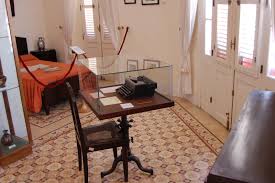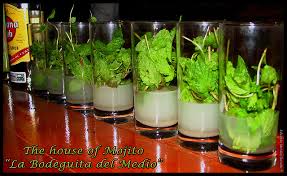Today begins the first of many postings about our upcoming trip to Cuba in March. Below are some gleanings from various tour books which I think are useful to know.
Suggested Books to enhance your trip are:
- DR Eyewitness Travel : Top 10 Cuba (more or less a pocket guide to walk around with)
- Cuba (Lonely Planet guide)
- DR Eyewitness Travel : Cuba (more comprehensive)
- Hemingway in Cuba by Hilary Hemingway
You might want to take the time to watch this YouTube video on Havana to get you in the mood. Maybe a Cuba Libre to drink?
http://www.youtube.com/watch?v=9385ntlhEZ8&list=PLrx9OXmXdHxkp6Nm2ijusoekE5beLmCMf
Cuba offers travelers a myriad of artistic, social, and sensual pleasures. The art, music, and architecture are unparalleled in the Western Hemisphere, the tropical waters are sparkling blue, and the people are as warm as a Caribbean breeze. Though Cubans are proud of their island and their historical accomplishments, they have been living through many hardships in the past several decades. Western tourists were all but absent during the Soviet years and only began to return in earnest in 1997. As a result, Cubans are very interested in us. Many speak English and will want to talk to you. Their curiosities will range from what you think about Cuba, to opinions on our country and world events. Few, if any, will be even remotely unpleasant, let alone hostile. Cuba is a safe country with little petty crime. Many Cubans are entrepreneurs of one sort or another who hope that being helpful might earn them a few dollars. Much of the Cuban economy is bolstered by black market activities. Hustling is benign and not intended to be threatening in the slightest. If anything, Cubans will try to sell you good cigars and a good “paladar” (family-run restaurant), the two most easily hustled items.
Room Safes are available in every room for your cash, passport, and other travel documents. Sometimes a small fee is charged to use it– ask at the front desk of the hotel. You do not need to carry your passport on you while in Cuba. Leave passports, airline tickets and cash in the safe. Make several copies of your passport before traveling. You will want to carry one on your daily excursions and keep the original in your room safe.
Bathrooms: If you need to go, simply ask: “Donde está el baño (pronounced “banyo”)?” Bathrooms in Cuba are not as neat or clean as what we are used to. The bathrooms in restaurants, museums, etc. are the best of the lot and they usually have attendants who are tipped in exchange for toilet paper and cleanliness. $0.25 cents is adequate. It’s always a good idea to carry a pack of tissues anyway.
Clothing: If traveling in spring or fall, the weather is warm, so pack for the tropics. Much of the joy of Cuba is walking its streets, and many of those streets are cobbled so bring good walking sandals and shoes. It is a good idea to bring clothes that you won’t mind leaving behind, as they are very much appreciated by hotel housekeepers and other people you meet. Shorts and T-shirts are fine for the day; skirts, nice shorts, slacks and shirts are good for evening. You might want to bring a special outfit for a gala evening. Some places are air-conditioned, so you might want to bring a ligh,t long-sleeved jacket or sweater. Hats, sunglasses, and sunscreen are essential. Check the weather report and consider the wind chill caused by the island breezes. Please leave good jewelry at home. If you bring costume jewelry and the occasion arises, it can make a great gift for someone special you may meet. You might want one swimsuit…just in case.
Electricity: Electricity is erratic and both U.S. and European systems are used in hotels. The Hotel Parque Central, for example, uses the European system, while the Nacional uses the American system. You might want to bring an adapter for shavers. Hotels have hair dryers so there’s no need to pack one. (Keep in mind that the airlines charge a hefty $2.00 per pound for excess baggage and the total weight allowed for normal baggage is 44 lbs.)
Food: The Cuban cuisine is Caribbean, but not Mexican. Food is not spicy though it is flavorful. Cubans do not use chili peppers or tortillas. Expect a choice of fish or lobster and chicken, pork, or lamb for the main course accompanied by rice, beans, plantains, yucca, or other root vegetables. Salads are small when we get them. Desserts of flan (custard) or ice cream are the standard. The hotel serves a breakfast buffet every morning with lots of choices. Most restaurants are run by the State but, in recent years, “paladars” (private restaurants run in people’s homes) have sprung up throughout the city. Paladars have many government imposed restrictions. For example; beef, shrimp, and lobster are highly controlled by the government and paladar owners are not supposed to serve them but they do anyway. One must always be prepared to accept that when going out to a paladar which may be known for its great lobster, it may not be available because the goverment inspector is due to arrive that day. Going to a paladar is a great way to see a Cuban home and people who are bridging the gap between a collective and private economy.
Special Food Needs: The Cuban diet is heavy on rice, beans, and animal protein. We can arrange vegetarian plates at dinner with advance notice. However, if you have special dietary needs, we will need to know in advance. Low-carb diets are difficult to maintain in Cuba; however, the breakfast buffets at most hotels are amply stocked with cheese, hardboiled eggs, fruits, and vegetables.
Snacks: Snacks are not easily obtained in Cuba. We will be eating hearty meals, and breakfast is a large buffet. However, if you want to have something to take along on the bus or on a walking tour, we recommend bringing granola bars, nuts, trail mix, and such. Vegetarians in particular may want to bring along something to supplement their diet.
Water: Though you will see Cubans drinking the water and it is generally fine, it is prudent to stick to bottled water. You can brush your teeth with the hotel tap water. Bottled water is easily available throughout Havana. Drink plenty, especially if you are not used to the tropical heat. Make sure your bottle is properly sealed when purchasing.
Money: Cuban currency issues are so bizarre they are almost comical. At present, 4 currencies circulate in Cuba: The Euro, the Dollar, the Cuban Peso, and a new currency which is the one that is most used of all: the Convertible Peso, or “CUC.” The CUC is a currency that only circulates in Cuba’s tourist sector. It is essentially a bill that is worthless outside of Cuba and is comprised of a tariff on the US Dollar of 20%. One CUC is equal to $1.20. It is not illegal to have Dollars or Euros in Cuba; however, you are restricted from spending those Dollars in government stores. To buy at Cuban stores, restaurants, taxis, and other services, you have to convert your dollars to the CUC. This can be done at the airport or at the hotel, and there is no additional charge for exchange in either locale. At the end of the trip, you will be able to convert any unused Cuban currency back into Dollars without any additional charge. There are ATM machines in several locations in Havana. You could find an ATM in almost every bank and hotel in the downtown area of Havana. There are also ATMs in selected “Casas de Cambio” (Houses of Change -CADECA-). If you are interested in buying works of art, most artists and local galleries will allow you to leave a small deposit for work and then wire transfer money to them at a bank in either Spain, Canada, or Mexico. Some travelers will bring most of the money home; others will be borrowing, for example, to pay for the Cuban airport tax of $25.00.
Medicines: Bring anything you might need with you. There are no pharmacies or CVS stores in Cuba and medicines are hard to obtain. Cuban medical care is good in general but medicines are hard to come by. Cubans will therefore also need anything you can bring in the way of medicines: Vitamin C, aspirin, Ibuprofen, cough and cold medicines, asthma inhalers, antibiotics, and any over-the-counter medicine will be much appreciated.
Airport taxes: To leave Havana, the airport tax is $25.00 CUC cash (remember that this is equivalent to $30.00 U.S. Dollars.) and this tax is not included in the price. Please keep the $25.00 CUC with your passport to be used when you depart Cuba.
Taxis: For extra transportation, there are regular taxis throughout Havana. Just flag one down and it will stop. The tariffs on different taxis vary, but most are quite reasonable. When you get into the car, ask if the meter is running. Some cars or taxis, however, will charge a flat fee. There are also “bicitaxis” which are man-powered tricycle taxis that you can hail at any time. You might also see “Coco taxis” available. These are essentially a scooter with a fiberglass shell but good for travel in warm weather. Also, Havana is a walking town…walk as much as possible.
Gifts for Cubans: Cubans are a proud people, but they are happy to receive gifts. For women the best gifts are small necessities; such as, perfume, costume jewelry, make-up, nail polish and hair accessories. For men, colognes, disposable razors, baseball caps, and t-shirts (especially with American sports logos) are always appreciated. And, of course, anything for children–toys, books, chewing gum, and backpacks with logos are well received. Other helpful items to consider leaving behind or bringing along to give include: toothbrushes, sunglasses, deodorant, tampons, AA batteries, aspirin, ibuprofen, cold and flu medicine, and vitamins. For musicians some great presents are: guitar strings, reeds for woodwind instruments, and drumsticks; as well as jazz, R&B and hip hop music on CDs.
OPTIONS FOR FREE TIME
Souvenirs and Gifts
Cuban stores are thin on items for sale; however, the Museum of Fine Arts and the Artisans Markets (open Wed. – Sun.) have nice items to take back. The best gifts from Cuba are handmade crochet and wooden items, as well as musical instruments and CDs of Cuban music.
The Artists’ Market has quality paintings, jewelry, and a wide variety of crafts.
Music Venues: If anything defines Cuba, it is its exceptional music. The country is noted for being the origin of the Mambo, cha-cha-cha, rumba, danzón, Cuban bolero, Latin jazz, and the son, which is the precursor of salsa. Modern rhythms that are not well known in the United States include timba. Havana has a great music scene, though, like much else, it is sometimes hard to find out what’s going on in town. We will always make recommendations, but ask the hotel concierge as well.























